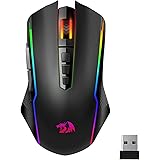When seeking out the best wireless gaming headsets, it is understood that a significant investment is often being considered, particularly when aiming for the top tier in 2025. The challenge lies not merely in finding a headset that sounds good, but in identifying a comprehensive package that perfectly aligns with individual gaming habits, audio preferences, and platform choices. The landscape of wireless gaming audio has evolved, offering remarkable convenience and feature sets, though discerning users are often presented with a complex array of options where compromises must be weighed.
The selection process for a premium wireless gaming headset typically involves balancing pristine audio quality with an extensive feature set, ergonomic comfort, and robust build. This guide aims to expand upon the insights provided in the accompanying video, offering a deeper dive into the technical aspects and practical implications of the leading contenders, helping to navigate the nuances that differentiate a merely good headset from an exceptional one.
Understanding the Evolution of Wireless Gaming Headsets
Wireless technology in gaming has advanced considerably, with latency no longer being the critical concern it once was. Modern 2.4GHz wireless connections, often alongside Bluetooth 5.2, provide near-imperceptible delay, making them entirely viable for competitive play. However, it must be acknowledged that for sheer audio fidelity, wired connections are still often considered to be superior, particularly by audiophiles. Wireless solutions primarily offer convenience, freedom of movement, and integrated features like microphones and multi-source audio mixing.
For those prioritizing wireless freedom, the ability to game on multiple systems, and the convenience of integrated audio mixing features, the premium wireless market delivers. Yet, these flagship systems are known to be expensive, and it is a common observation that microphone quality, in particular, is an area where compromises are frequently made.
Key Criteria for Evaluating Wireless Gaming Headsets
Before delving into specific models, a foundational understanding of the critical evaluation points is essential. The optimal wireless gaming headset for one individual may not be suitable for another, as priorities often vary significantly.
1. Sound Profile: Tailoring Audio for Gaming Genres
The audio presentation of a headset is paramount, and it is understood that different gaming genres benefit from distinct sound profiles. For competitive FPS (First-Person Shooter) gaming, precise directional imaging and clear detail are crucial for identifying enemy footsteps and other spatial cues. This necessitates a balanced, analytical sound signature where individual sounds are easily distinguished without being overwhelmed by excessive bass.
Conversely, for immersive single-player experiences, a richer, more expansive soundstage with robust bass can significantly enhance atmosphere and impact. While a good FPS headset can often be EQ’d to boost bass for single-player, not all designs manage this without introducing distortion or sacrificing detail. The ability to add bass effectively without diminishing the overall sound presentation is a key differentiator.
2. Microphone Quality: The Unsung Hero
A persistent challenge in the wireless gaming headset market is the dichotomy between exceptional audio playback and high-quality microphone capture. It is frequently observed that achieving both in a single wireless unit, especially at higher price points, remains elusive. The microphone is a critical component for team communication, and its clarity, noise cancellation capabilities, and sidetone implementation are significant factors.
Features such as retractable or detachable designs, AI noise cancellation, and EQ options for the mic are considerations. However, the fundamental quality of vocal capture, particularly in a wireless format where compression artifacts can be problematic, often determines a headset’s overall utility for communication-intensive gaming.
3. Comfort and Durability: Sustained Gaming Sessions
Long gaming sessions demand a headset that remains comfortable for hours. Factors such as overall weight, clamping force, earcup design, and material choices (e.g., faux leather vs. breathable mesh pads) are crucial. A lightweight design, combined with plush, well-ventilated earcups and a properly padded headband, is generally preferred.
Furthermore, the long-term durability of a headset is an important aspect of value. Reviews often highlight products that maintain their structural integrity and comfort over years of use, demonstrating a superior build quality that withstands the rigors of frequent gaming.
4. Feature Set and Connectivity: The Wireless Advantage
The convenience of wireless gaming headsets is heavily dependent on their integrated features and connectivity options. Key features include:
- Active Noise Cancellation (ANC): Essential for blocking out environmental distractions, though its implementation can vary in effectiveness and impact on sound tuning.
- Simultaneous Bluetooth: This allows for game audio and mobile device audio (e.g., Discord calls, music) to be heard concurrently, a highly desirable feature for many multi-tasking gamers.
- Game-to-Chat Mix: The ability to balance game audio with chat audio, either via hardware controls on the headset/base station or through software, is critical for effective communication.
- Multi-Platform Support: Seamless compatibility with PC, PlayStation, Xbox, and mobile devices, often with specific versions tailored for Xbox chat functionality.
- Software Experience: The accompanying desktop or mobile applications for EQ customization, firmware updates, and feature control must be intuitive and stable.
5. Battery Life and Charging: Uninterrupted Play
For a wireless device, impressive battery life is non-negotiable. Many modern headsets offer 24 hours or more on a single charge. Innovative charging solutions, such as hot-swappable batteries or convenient docking stations, further enhance the user experience by minimizing downtime.
Top Contenders: A Detailed Analysis
The following sections delve into some of the most prominent wireless gaming headsets currently dominating the market, expanding on their strengths, weaknesses, and unique selling points.
Audeze Maxwell: The Audiophile’s Wireless Companion
The Audeze Maxwell, priced at $299 or $329 depending on the version, stands out as an “audio quality first” proposition. It has uniquely earned respect from both gaming peripheral reviewers and audiophile circles. This acclaim stems from its utilization of planar magnetic drivers, a technology distinct from the more common dynamic drivers.
- Planar Magnetic Drivers: These drivers employ a very thin diaphragm suspended between magnets, offering exceptional clarity, detail, and transient response. This technology often results in a more natural and spacious soundstage, making the Maxwell a top choice for critical listening and immersive experiences. However, their delicate nature necessitates careful handling, as slamming the headset or pressing the earcups can risk driver damage.
- Audio Prowess: The Maxwell is renowned for its detailed sound and powerful, yet controlled, bass response, making it suitable for both competitive and single-player gaming, as well as high-fidelity music listening.
- Feature Quirks: Despite its sonic excellence, the Maxwell does present some unusual feature implementations. Its Bluetooth functionality, for example, is not simultaneous and automatically prioritizes phone calls over game audio, which can disrupt gameplay. Active noise cancellation is not included, nor is a dedicated game-to-chat mix via hardware.
- Microphone: The mic on the Maxwell is generally considered to be “mid,” meaning it performs adequately but not exceptionally, particularly given the headset’s premium price. It features some background AI noise cancellation, which can unfortunately degrade vocal quality if not properly managed.
- Comfort and Build: Weighing just under 500 grams with the mic, it is one of the heavier options available. However, its design effectively distributes weight, ensuring comfort during extended use. The stock ear cushions are often praised for their quality.
For those prioritizing uncompromised wireless sound quality and who already possess a wired music solution, the Maxwell is a strong contender, though its feature set might be perceived as spartan by some.
SteelSeries Arctis Nova Pro Wireless: The Feature-Rich Innovator
Retailing originally at $349, but occasionally found for as low as $260, the SteelSeries Arctis Nova Pro Wireless remains a benchmark for its comprehensive feature set. This headset has been a staple since July 2022, demonstrating remarkable longevity and reliability.
- Unrivaled Features: Its base station offers extensive hardware controls, including a volume limiter and game-to-chat mix functionality. Simultaneous Bluetooth allows for mixed audio from game and mobile sources. Crucially, it’s noted as the only system on the market allowing wireless integration with external mixers like the GoXLR via 3.5mm aux in/out on the base station.
- Dual Battery System: An innovative hot-swappable dual battery system ensures virtually infinite battery life, as one battery charges in the base station while the other powers the headset.
- Active Noise Cancellation (ANC): This feature effectively reduces ambient noise, enhancing immersion and focus during gameplay.
- Sonar Software: The accompanying Sonar software is highly regarded for its full parametric EQ, offering extensive customization options and presets for popular games.
- Comfort and Durability: Weighing 355 grams, it is notably light and comfortable, adaptable to various head sizes. Its robust build quality has proven itself over nearly two and a half years of use.
- Microphone: While better than the Maxwell’s, the mic is generally considered “mid” for its price point. However, Sonar software does provide EQ options to shape its sound.
- Console Compatibility: The Xbox version provides full chat support for PlayStation, whereas the PlayStation version lacks Xbox chat support, a key consideration for multi-console gamers.
The Arctis Nova Pro Wireless is ideal for users who demand a complete package of features, excellent comfort, and multi-platform versatility, particularly those requiring GoXLR integration or ANC.
Astro A50X: The Home Theater & Console Powerhouse
The Astro A50X, priced at $349 for the X-version and $299 for the standard, represents a significant evolution from previous generations, offering a robust and highly capable wireless gaming experience. It is particularly compelling for console and home theater enthusiasts.
- HDMI 2.1 Pass-Through (X-version): The key differentiator for the X-version is its HDMI 2.1 pass-through, supporting both 24-bit audio and video. This allows consoles to connect directly to the base station and then output to the TV, simplifying home theater setups and ensuring optimal audio/video synchronization.
- Multi-Source Connectivity: The base station supports three simultaneous sources (console, PC), with easy toggling via a dedicated headset button. This is a unique advantage, as most other systems are limited to two.
- Simultaneous Bluetooth & Chat Mix: The A50X includes simultaneous Bluetooth and G-App customization for console use, offering game-chat mix capabilities.
- Microphone Excellence: This headset boasts one of the best-sounding, most natural microphones found on a wireless headset. It features a flip-up to mute design with multiple EQ presets (default, broadcast, competition) that are straightforward and effective.
- Comfort: At 366 grams, it is comfortable for long sessions, with earcups that rotate for neck wear. The magnetic earpads are plush and easily swappable, though their internal opening is smaller, meaning ears sit more on the pads than inside.
- Limitations: Active Noise Cancellation is absent, and there is no 3.5mm aux input on either the headset or the base station, making it a 100% wireless solution.
For console gamers or those with complex home theater setups where HDMI pass-through is valuable, the Astro A50X is an exceptionally strong recommendation, especially given its stellar microphone quality.
ASUS ROG Delta II Wireless: Lightweight Comfort and Solid Performance
The ASUS ROG Delta II Wireless, coming in at $229.99, offers a highly competitive option, particularly for PC gamers, distinguished by its exceptional comfort and impressive sound profile for its price range.
- Unmatched Comfort: Weighing a mere 317 grams with the mic, it is lauded as one of the most comfortable headsets available, making it suitable for infinitely long gaming sessions. Two sets of earpads (faux leather for deeper bass, breathable mesh for cooler wear) are included.
- Smart Controls & Connectivity: It supports 2.4 wireless, Bluetooth 5.2, and 3.5mm aux input on the headset. Simultaneous Bluetooth is a key feature, with intuitive separate volume controls for 2.4 and Bluetooth sources.
- Sound Quality: The Delta II delivers a surprisingly strong audio performance. Its bass boost function, controlled via Armory Crate, is particularly noteworthy for its ability to deliver significant bass without distortion, a rare feat outside of the Audeze Maxwell.
- Microphone: The mic sounds natural and easily surpasses the quality of both the Maxwell and Arctis Nova Pro Wireless. It features lag-free sidetone, though a hardware control for sidetone toggle is a desirable, absent feature.
- PC-Centric Software: EQ presets and bass boost functions are tied to the PC-side Armory Crate software, meaning these enhancements are unavailable on console or via Bluetooth alone. It’s recommended to disable simulated surround sound for better spatial perception.
- Console Limitations: While great on PS5, Xbox users will need to run it wired into the controller, which can result in a suboptimal experience. It lacks a dedicated chat driver on PC for game-chat mix and active noise cancellation.
The ROG Delta II Wireless is an excellent choice for PC gamers prioritizing comfort, sound quality (especially bass), and a high-quality microphone, provided its console limitations and lack of ANC are acceptable.
Alienware Pro Wireless: Premium Comfort, Limited Features
The Alienware Pro Wireless, with an MSRP of $229.99 but often discounted to $199.99, is perhaps most notable for its extraordinary comfort, but it is observed to be held back by a limited feature set and software experience.
- Exceptional Comfort: At 314 grams, it is incredibly lightweight. The use of buttery faux leather and low-density foam for the earcups and headband creates an exceptionally comfortable fit, often described as “little pillows on your face.”
- Impressive Battery Life: With no RGB lighting, it offers 35 hours of battery life with ANC on and a remarkable 75 hours with ANC off.
- Sound Profile: The sound quality out of the box is enjoyable, characterized by an exaggerated Harman curve with a classic V-shape (big lows, big highs, scooped mids). This tuning is often favored for its engaging and punchy delivery.
- Feature Deficiencies: Simultaneous Bluetooth is absent. Despite having both game and chat drivers in Windows, there is no hardware or software control for game-to-chat mix, effectively rendering the feature unusable without third-party software. EQ presets are also missing from the Alienware Control Center.
- Microphone: The mic is considered “mid,” suffering from transmission and compression artifacts that detract from its decent tonal quality. The accompanying software for AI noise cancellation does not significantly improve vocal clarity.
- Console Limitations: Like some other offerings, it works well with PS5 but not with Xbox, lacking even an aux input for controller connection.
While the Alienware Pro Wireless offers incredible comfort, its restricted feature set, particularly for its price, makes it a less compelling total package for the discerning gamer. It is believed to have potential for a V2, but in its current iteration, it is often seen as not fully fleshed out.
Razer Kraken V4 Pro: Haptics as a Primary Selling Point
The Razer Kraken V4 Pro carries an offensive price tag of $399.99, which prompts a critical examination of its value proposition. The standard Kraken V4, at $179.90, offers similar sound and feel, highlighting the premium placed on the “Pro” features.
- Sensa HD Haptics: The primary distinguishing feature of the Pro model is the Sensa HD Haptics, which provides vibrations in the earcups to enhance in-game events. While this can be immersive when done well, full integration is currently limited to a small number of titles (10 games, with 5 recently added). For other games, a more generic interpretation is used, which can sometimes lead to an overwhelming or chaotic experience.
- Connectivity: Simultaneous Bluetooth is included, a feature absent from the standard V4. The base station includes USB-C connections and a 3.5mm input, but no 3.5mm output for external mixers and no battery charging system like the Arctis.
- Microphone: The retractable mic, while benefiting from Razer’s advanced mic technology (as seen in the Blackshark V2 Pro 2023 edition), suffers from a smaller capsule size. This design compromise leads to a noticeable reduction in sound quality compared to its detachable counterpart, which is a significant drawback at this price point.
- Comfort and ANC: The headset is relatively heavy at 393 grams, and some users report clamping force issues. Despite the style of earpads typically associated with ANC, this feature is not present, which is a notable omission for a nearly $400 headset.
- Sound Quality: The sound is considered decent but requires significant EQ adjustments to truly shine. The included EQ presets for movies, music, and gaming are often found to be underwhelming, with the FPS preset being particularly fatiguing for some.
The Razer Kraken V4 Pro is primarily for those intensely interested in haptic feedback and who are willing to invest heavily in a feature with currently limited full game integration. Otherwise, its high price, combined with mic quality compromises and lack of ANC, positions it as a less competitive option for general use.
Honorable Mentions and Alternatives
Beyond the primary contenders, several other wireless gaming headsets and innovative audio solutions are worthy of consideration, each offering distinct advantages.
Turtle Beach Stealth Pro: Directional Imaging Specialist
The Turtle Beach Stealth Pro was highly regarded for its exceptional directional imaging in FPS games, particularly Call of Duty. However, for many, it was eventually surpassed by the SteelSeries Arctis Nova Pro Wireless in terms of overall comfort and feature set, especially after custom earpad upgrades became available for the Arctis. The Stealth Pro was a departure from Turtle Beach’s typical “entry-level” build quality, feeling more premium. While its open-back cousin, the Atlas Air, showed promise for FPS, its open design meant significant sound leakage and a lack of ANC, making it a niche pick. If found at a discounted price (closer to $140 from an original $180), and if its specific FPS tuning and microphone quality meet a user’s needs, it could still be a viable option.
Corsair Virtuoso Max: Flagship Shortcomings
The Corsair Virtuoso Max, positioned at a flagship price point of $329.99, was found to fall short in several key areas. While its design and build quality are often praised, its overall performance did not consistently justify its premium cost when compared to more robust offerings from competitors.
SteelSeries Arctis GameDac: True Wireless Gaming Earbuds
A surprising entry into the gaming audio space is the SteelSeries Arctis GameDac, priced at $160. These are essentially true wireless earbuds that also incorporate 2.4GHz wireless for gaming, making them a versatile lifestyle and gaming product. They offer solid on-head controls via tactile buttons and provide surprisingly good sound quality, comparable to some premium lifestyle earbuds, though with slightly less bass response and ANC effectiveness.
- Versatility: These earbuds bridge the gap between dedicated gaming headsets and portable audio solutions, allowing users to transition seamlessly from gaming at a desk to listening to music on the go.
- EQ Customization: They benefit from SteelSeries’ extensive EQ presets via desktop or mobile apps, which save directly to the earbuds.
- Microphone: As expected for earbuds, the mics are understandably not on par with boom mic solutions, but sidetone is present.
For those not heavily reliant on a boom mic and seeking a single, multi-purpose device for both gaming and daily life, the Arctis GameDac presents a compelling and innovative option.
Making Your Informed Decision
The decision regarding the ultimate wireless gaming headset for 2025 is ultimately a personal one, heavily influenced by individual priorities and budget. If the highest fidelity audio for all wireless listening needs is paramount, the Audeze Maxwell remains unsurpassed, despite its unique feature quirks. For those who prioritize a feature-rich experience, comprehensive multi-platform support, and active noise cancellation, the SteelSeries Arctis Nova Pro Wireless is a dominant force. Console gamers and those with advanced home theater setups will find the Astro A50X, with its HDMI 2.1 pass-through and superior microphone, to be an outstanding choice. Budget-conscious PC gamers seeking exceptional comfort and strong audio performance will find the ASUS ROG Delta II Wireless a compelling option. Conversely, products like the Razer Kraken V4 Pro, despite their innovative haptic technology, and the Alienware Pro Wireless, with its unparalleled comfort, often present a less balanced value proposition due to significant compromises in features or microphone quality. Carefully weighing these factors ensures that the chosen wireless gaming headsets will serve your needs effectively for years to come.









